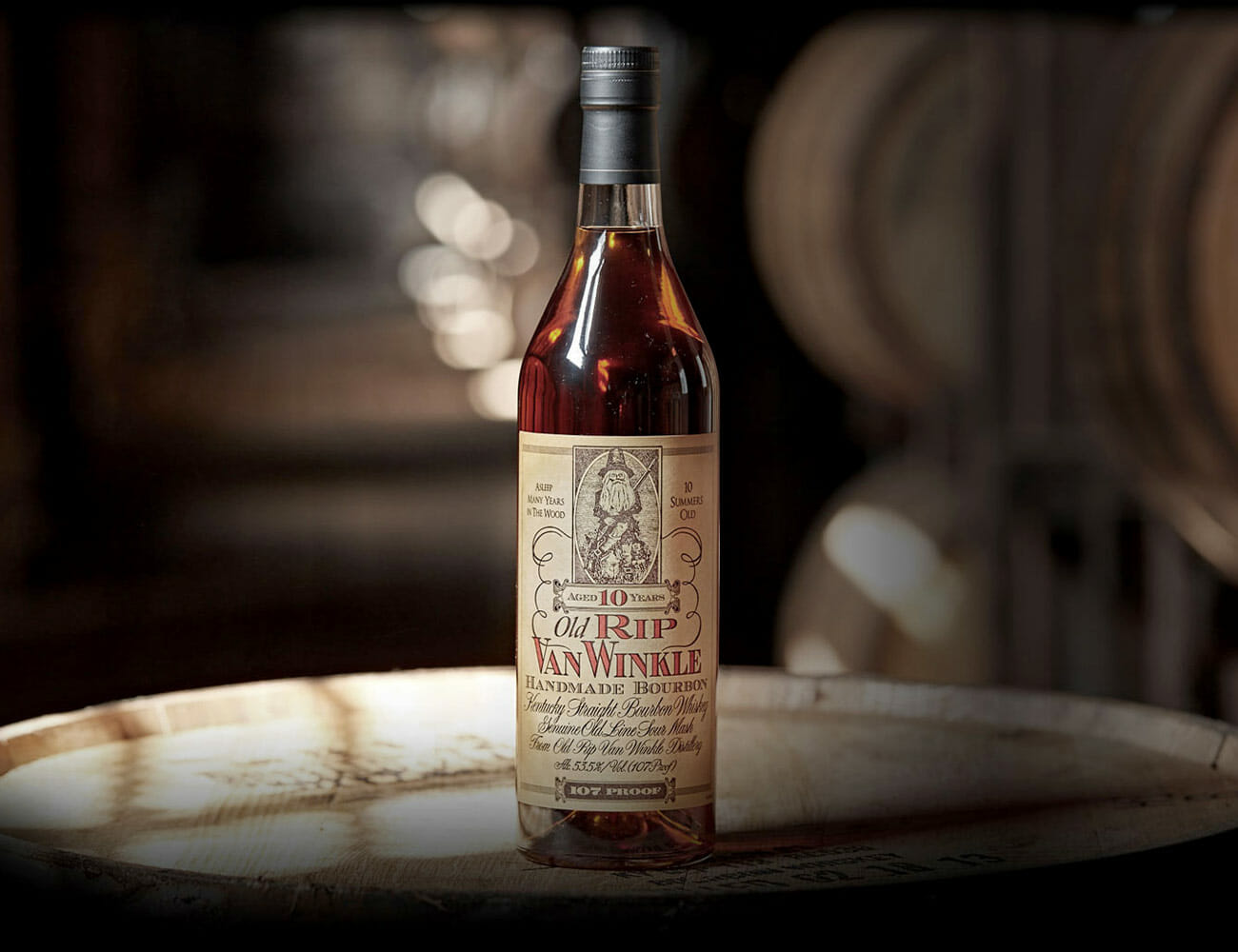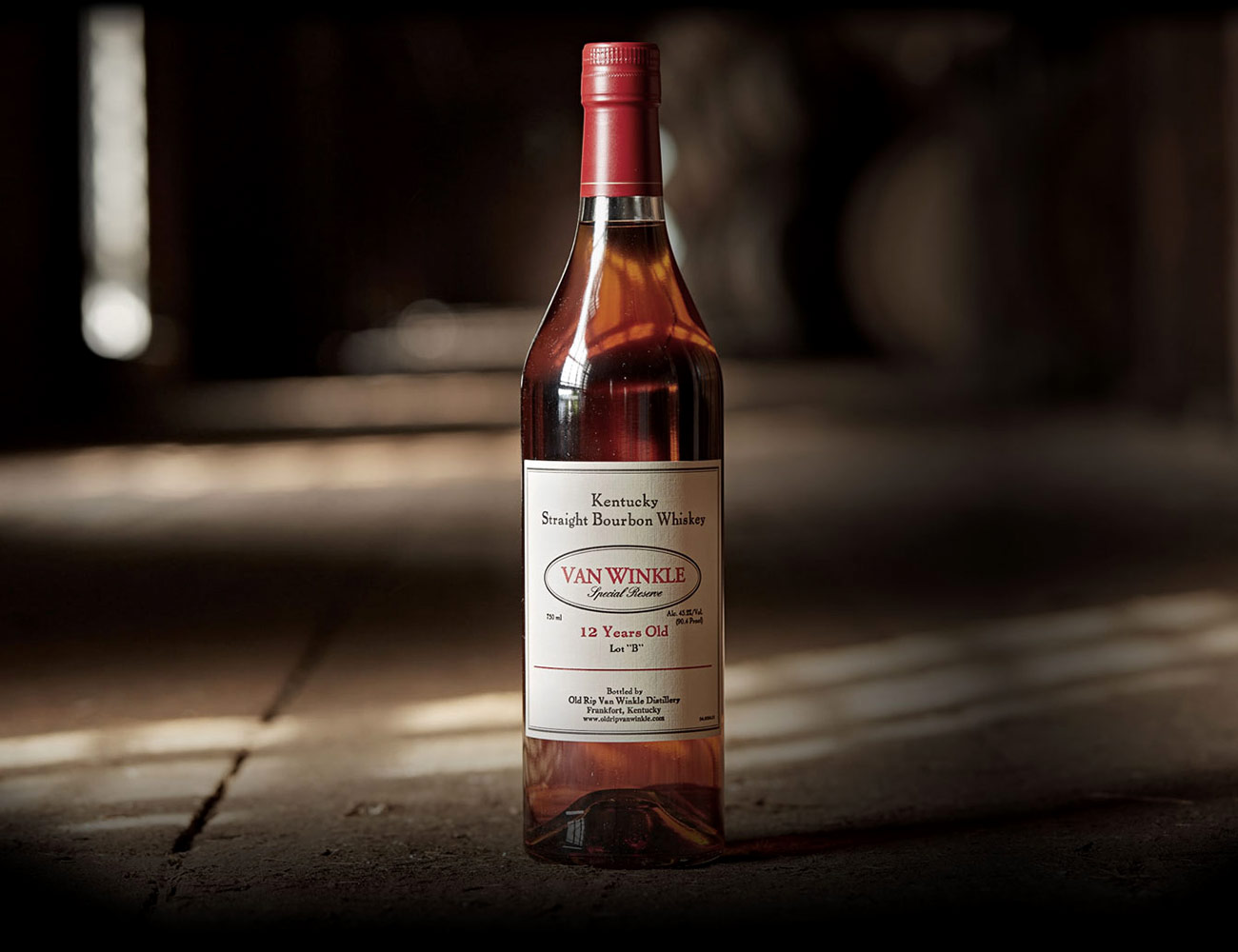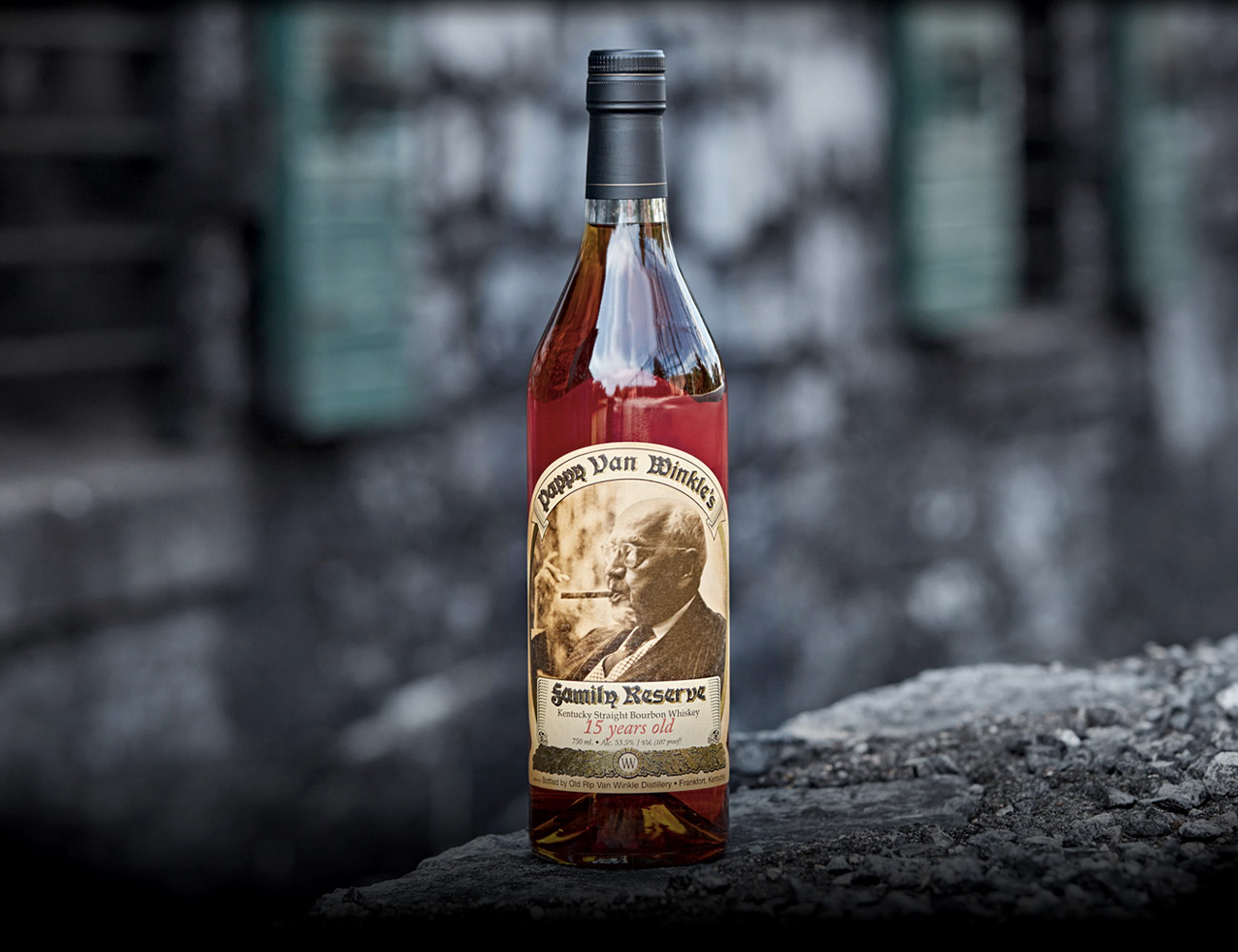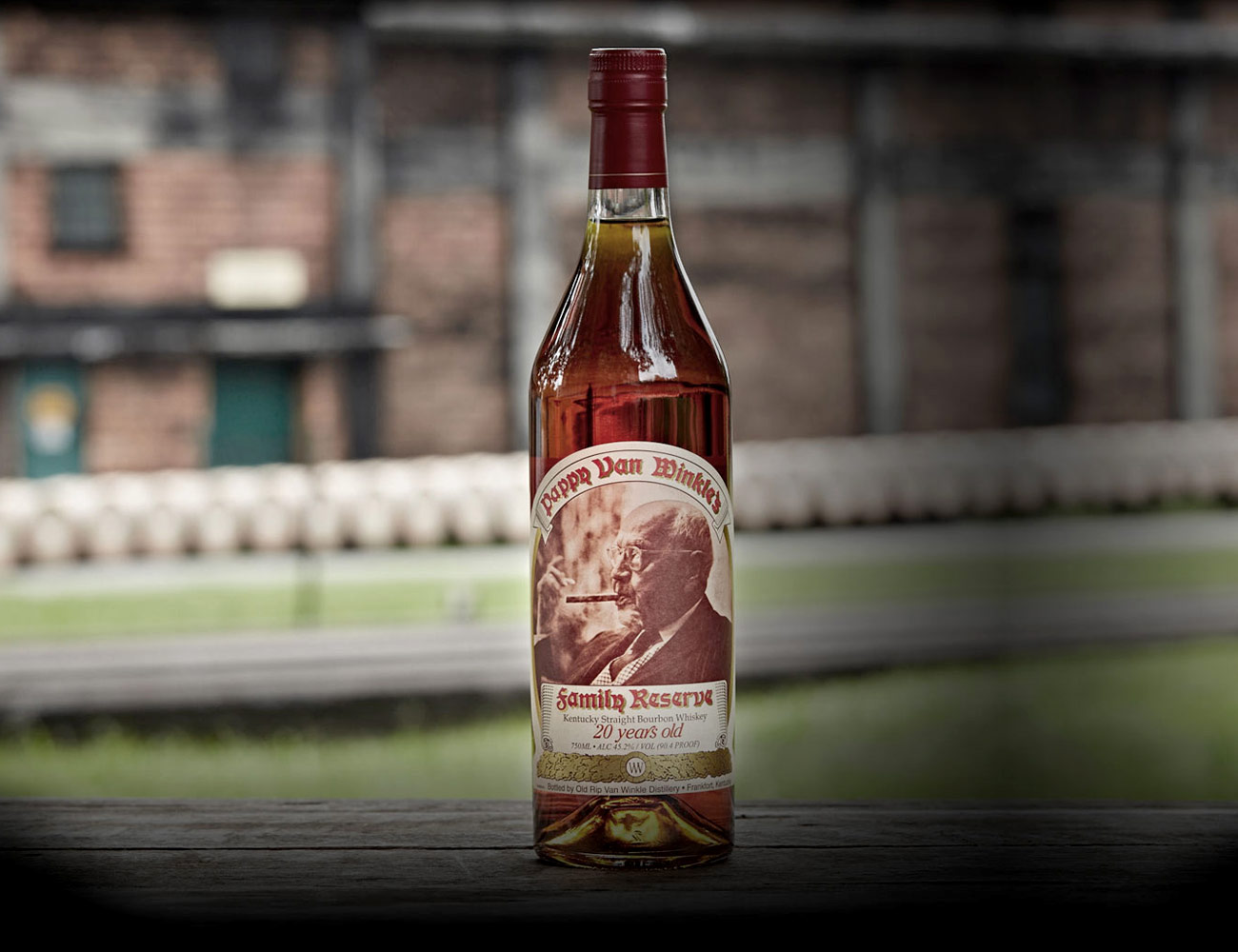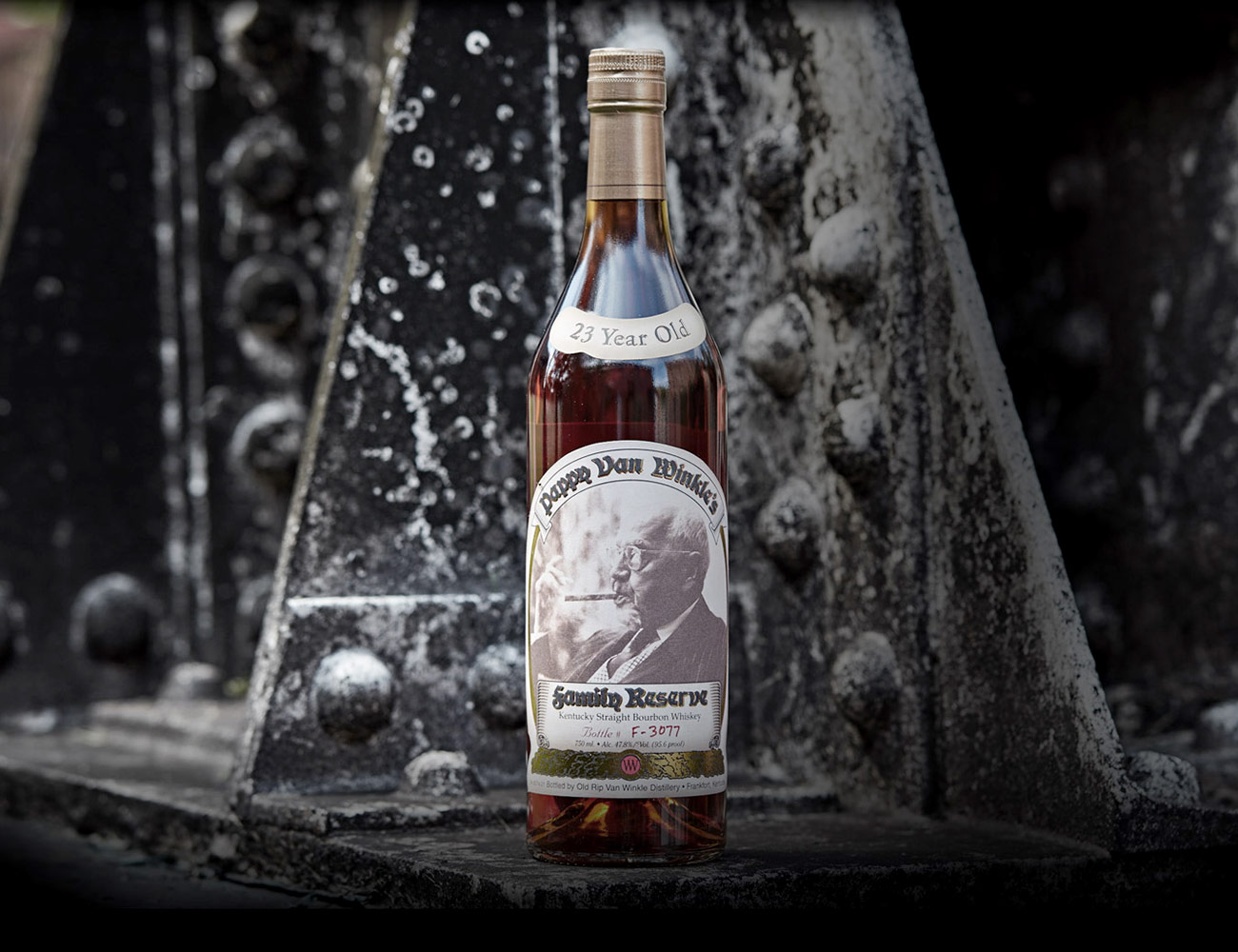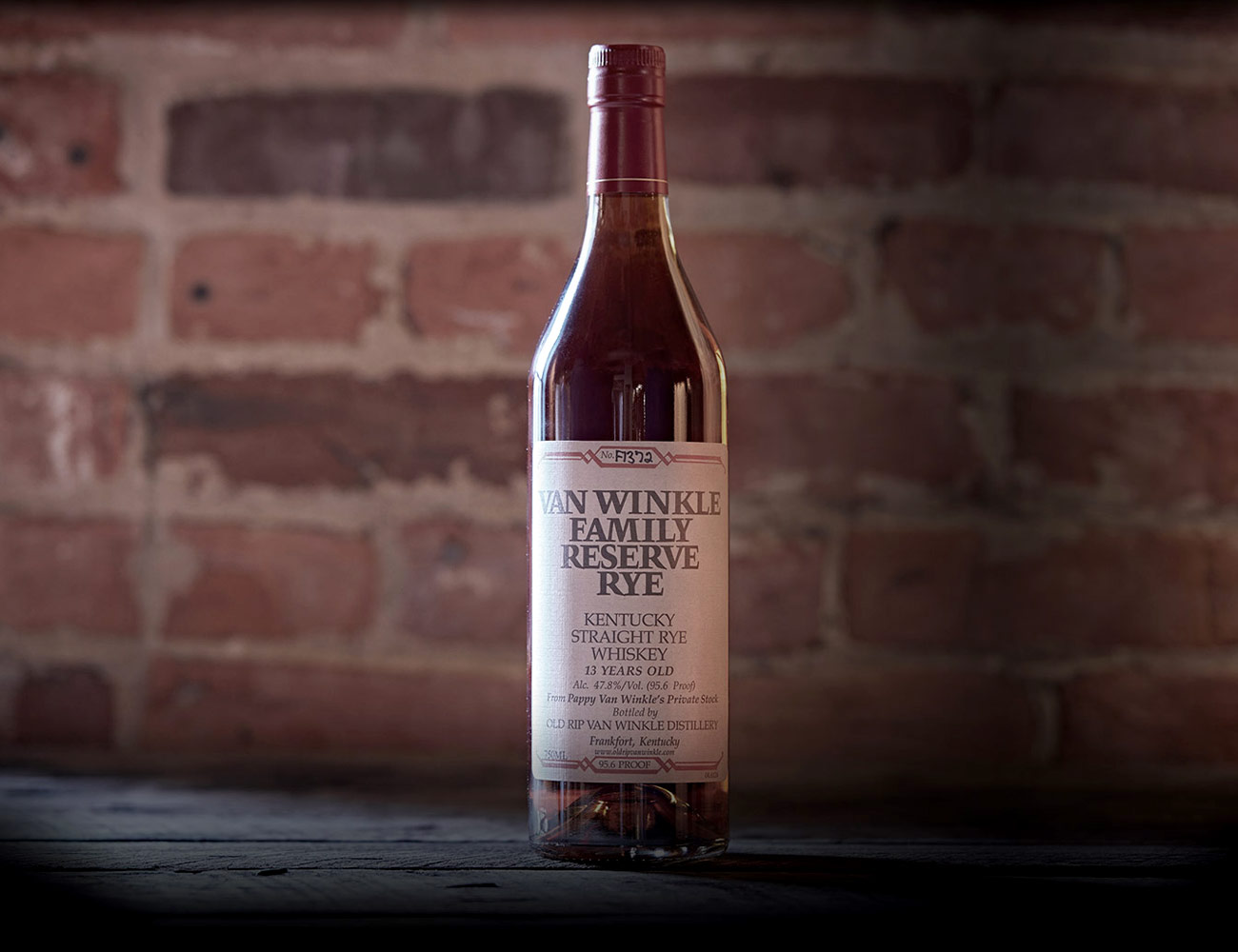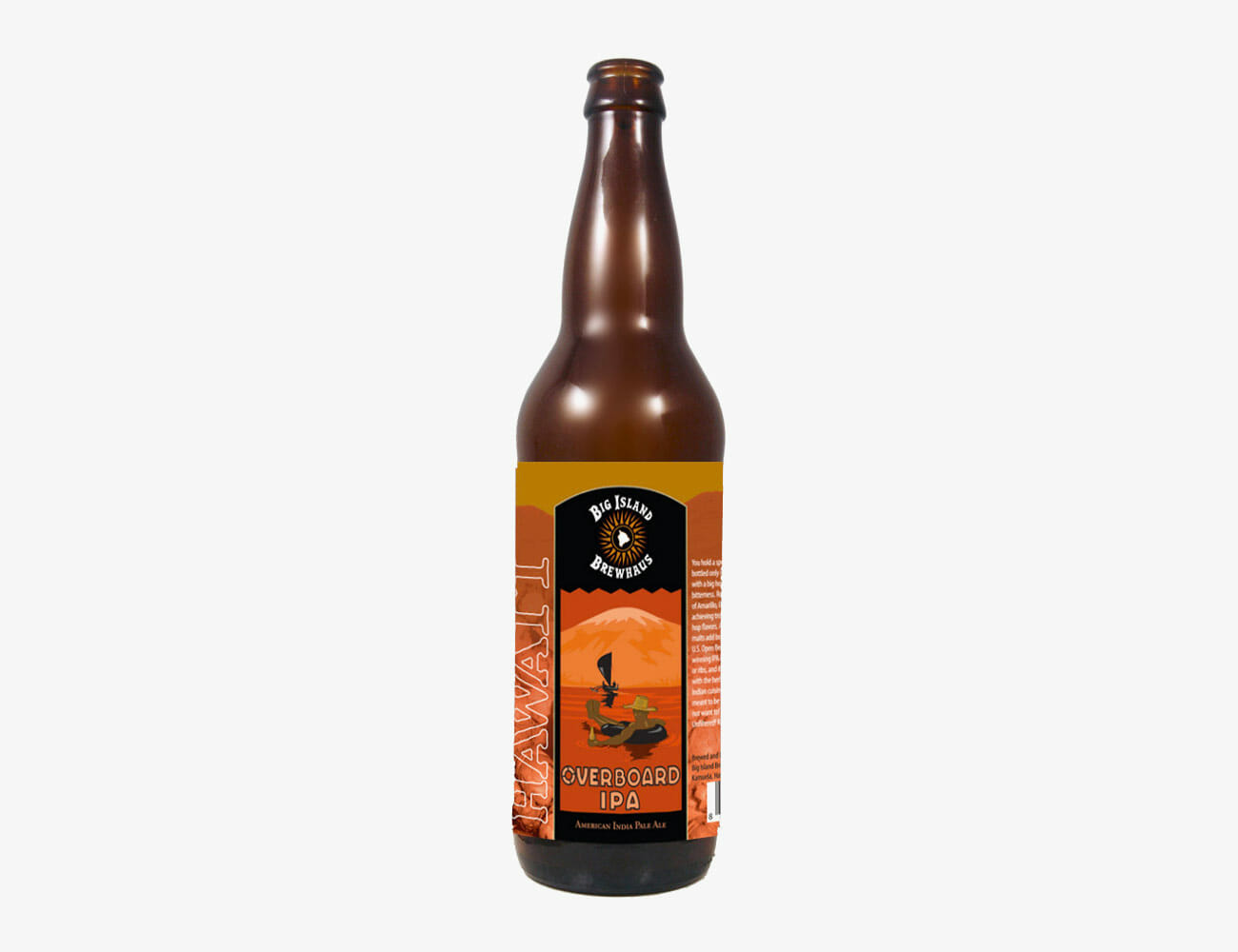You’d think Pappy Van Winkle is a brand that needs no introduction — except that it does. The truth is that most people don’t know anything about “Pappy,” other than that it’s supposed to be the best of its kind. So let’s set the record straight. Here’s everything you need to know about America’s most-sought-after spirit.
Pappy History, Abbreviated
Opening Shop: Pappy Van Winkle refers to Julian Sr. “Pappy” Van Winkle, who created the original line of Van Winkle whiskeys. Van Winkle is a Dutch name that loosely translates to “from shopkeeper.” After gaining some experience through jobs and an earlier distilling venture before Prohibition, Julian Sr. opened a new Stitzel-Weller distillery in 1931 at the age of 61 outside of Louisville. He influenced the business until his death in 1965 at the age of 91.
A Decades-Long Decline: In the 1970s and 1980s, the public’s drinking preferences shifted towards other spirits (especially vodka), a change that severely damaged the bourbon industry. After years of steady declines in sales and a disagreement between heirs around what to do with the business, Pappy’s son, Julian Jr., sold the Stitzel-Weller distillery and the rights to all of its whiskey brands in 1972 — except for the Old Rip Van Winkle name.
Julian Jr.’s decision to purchase back some of the Stitzel-Weller whiskey stock and bottle it under the Old Rip Van Winkle label had preserved his father’s work to some degree, but the market for Kentucky’s whiskey remained dry. Julian Jr. died in 1981, leaving the Old Rip Van Winkle line and the Stitzel-Weller stocks to his son, Julian III. Around that same time, Stitzel-Weller stopped bottling for the Van Winkle family. So Julian III switched to the Hoffman Distillery down the road in Lawrenceburg to bottle and store his whiskey.
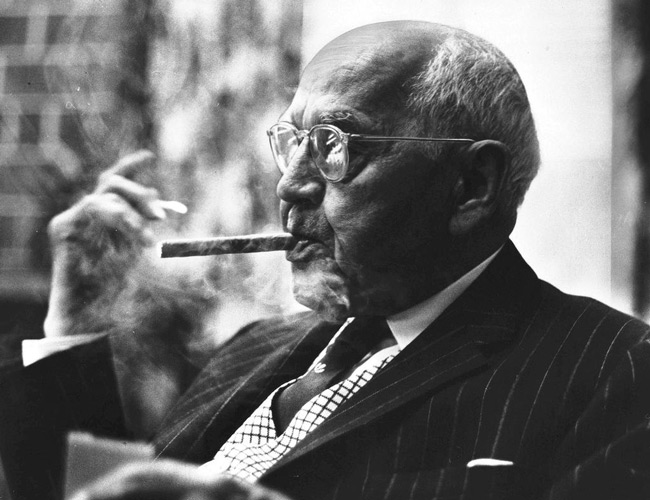
Mr. Pappy Van Winkle himself.
The Comeback: In the late ’80s and early ’90s, bourbon started creeping back into American drinking culture, and Julian III’s brand began garnering attention. He began sourcing older whiskeys he purchased from other distilleries — Stitzel-Weller chief among them — and released a 10-year-old bourbon, followed by 12-, 14- and eventually 20- and 23-year-old bourbons. A Chicago sales rep entered the 20-year-old bottle into the Beverage Tasting Institute’s panel, where it scored a 99. It was the company’s first big break. According to Julian III, the bourbon inside that bottle had been purchased from Wild Turkey, who had acquired it themselves from a distillery called Old Boone. This was the genesis of Pappy hype culture.
Whiskey Craze: The question of who made the juice inside any particular bottle of Pappy Van Winkle is a huge source of debate and interest for die-hard whiskey fans, particularly in the light of the Buffalo Trace partnership. There is no possible way that Buffalo Trace could produce the exact same bourbon that had won Pappy awards in the past.
At some point after 2002, a portion of whiskey produced by Buffalo Trace was being mingled with the old Stitzel-Weller stock to create new bottles of Pappy and Old Rip Van Winkle. The speculation on which vintages of each offering stopped including Stitzel-produced bourbon, a distillery with a certain mystique, have added mystery to Pappy lore, and made older bottles far more valuable.
Today, few names in whiskey demand the money and interest Pappy does, and none trigger the same fanatical cold calling of liquor stores hundreds of miles away.
How to Buy Pappy
Spoilers: short of having a connection with a liquor store owner or distributor, there are no guarantees in the hunt for Pappy. Use these best practices wisely, but temper expectations at the door.
Get on the List: Even the best liquor stores are limited to the allocated bottle count distributed to them. After Buffalo Trace has sent out the year’s allotment, there won’t be new bottles until the next year. This means stores have very few bottles and lots of customers who want them. The most common solution for shops of all sizes is a raffle, so ask the cashier at your local spots if one exists and get yourself on it. Winning the raffle won’t net you a free bottle, but at least you get a chance to buy it.
Look at a Map: Stores in population centers are more likely to be allocated coveted whiskey, but they’re also more likely to pull huge crowds. Stores with less visitors or in lower-populated areas are allocated less of the good stuff. This makes the edges of suburbia prime whiskey hunting territory — where retailers are more likely to receive Pappy and there are fewer people fighting for each bottle.
Be a Good Customer: The simple and sagely advice of all experienced whiskey collectors. Give your business to a store near you over a period of time and you’re more likely to get a “sure” when asking about rare or allocated bottles. It should be noted that this technique is employed more effectively with smaller stores, as larger ones aren’t necessarily fighting to keep every customer that comes through the door.
Open Up Your Wallet: It can be comforting (or obnoxious) to know that once every method is exhausted, there are always sellers somewhere out there. It could be a friend of a friend, some guy on Craigslist or an exchange through Facebook direct message, but rest assured someone out there is willing to take you for all you’re worth for the whiskey you seek. It will be expensive and you could get ripped off (fake Pappy is not uncommon), but, like it or not, these secondary buying markets do exist.
Mark Your Calendar: The Pappy Van Winkle Collection releases around the same time every year — late October to November. Whether you’re chasing it at retail (best of luck!), signing up for raffles or resigning yourself to paying exorbitant secondary market prices, that’s when new bottles begin circulating. Be warned: most shop owners are either hesitant to provide, or flat-out don’t know, when their allocation will arrive. Shipping to stores can vary by region, state and city; short of having a friend who works for the distributor, you won’t know exactly when it’s landing.
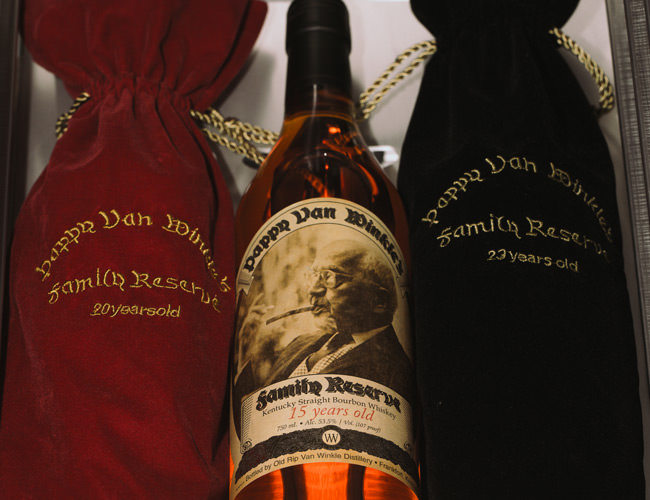
Every Bottle of Pappy, Explained
The Pappy Van Winkle Collection is made up of six bottles. Find tasting information, retail prices and street prices for all six here.
Old Rip Van Winkle 10-Year
Retail Price: $70
Street Price: ~$500
Proof: 107
A charming, out-of-place wizard with a rifle pressed across his chest dons the label of the most available of the Van Winkle whiskeys. It’s just under barrel proof, with a splash of water added after it’s batched to reign it in. Its proof and age mean there’s a flavor punch, but it’s mostly baking spices, wood and alcohol, rather than the sweetness that earned Pappy its rep. It’s a great bottle to track down for completionists or those who just want a bottle for bragging rights.
Van Winkle Special Reserve 12-Year
Retail Price: $80
Street Price: ~$700
Proof: 90
Special Reserve 12-year is the Van Winkle whiskey for the Basil Hayden’s drinker. Forgive the heresy of this comparison, anyone who’s tried it knows it to be true. Its lower proof (90) and average maturation time (for Pappy, at least) means you don’t get harsher alcohol burn on the nose or palate and you don’t get swallowed up by oak tannins. That said, like Basil Hayden’s, it’s satisfying for everyone from the novice to the seasoned pro.
Pappy Van Winkle’s Family Reserve 15-Year
Retail Price: $120
Street Price: ~$1,000
Proof: 107
Only three of the bottles in the greater Pappy Van Winkle Collection bear the word “Pappy” on them — this is the youngest. It’s different from its fellow PVW bottles in one major way, and a few minor ones. Major: it’s bottled at barrel proof (107), the only expression in the collection handled that way. So while you get some of the sweetness associated with older Pappy, you also get a thick, oily body and a healthy burn on the first few sips. It used to be the go-to Pappy for those tip-toeing into the collection, but its second-hand price has climbed from splurge to you-better-check-your-bank-account in recent years.
Pappy Van Winkle’s Family Reserve 20-Year
Retail Price: $200
Street Price: ~$1,500
Proof: 90
The most-awarded of the Pappys, it’s often said 20-year can be mistaken for a fine cognac. It’s significantly lower proof (90) than its compatriots, sacrificing its body for a wicked balance of wood tannins and fruity sweetness. This bottle hasn’t been a reasonable buy in decades, so don’t expect to find any deals here.
Pappy Van Winkle’s Family Reserve 23-Year
Retail Price: $300
Street Price: ~$2,400
Proof: 96
This is unobtanium. The oldest of the Pappy Van Winkle Family Reserves sits right between its younger siblings in proof (96), but distant in flavor. The last three years of maturation it boasts over the 20-year are very clear — this is a woody, tannic, mouth-drying whiskey. Some of the floral, fruit-driven sweetness of the 15- and 20-year is diminished because of this. This isn’t to say it’s not an exceptional sipper; rather, it’s not what anyone would call “smooth.” If you find it under $1,000 anywhere, buy it — you’ll be able to sell it to some schmuck for at least twice that much.
Van Winkle Family Reserve Rye 13-Year
Retail Price: $120
Street Price: ~$1,250
Proof: 96
This is a rye, but we can assume it isn’t a high-rye. The stuff drinks just like bourbon and is probably the second or third best-reviewed of the entire collection. It’s one of the oldest ryes on the market (Sazerac Rye from Buffalo Trace’s Antique Collection steals the crown) and it shows in spades — whatever spiciness you associate with rye is bowled over by a rich mix of tobacco, honey, toffee and fruit. This is the Van Winkle whiskey for the whiskey nerd in your life.


